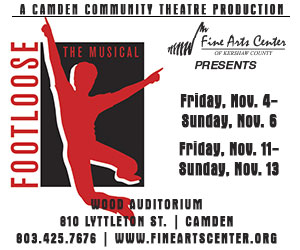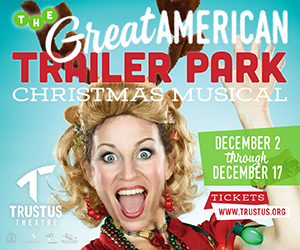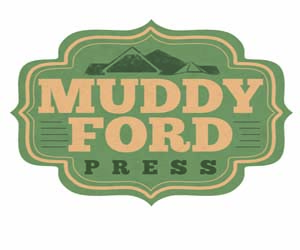Music Director Tom Beard
By Alex Smith
The music director in regional repertory theatre wears many hats, and is directly involved in a theatrical production longer than just about anybody aside from the producers and the director. It is a rigorous position for even the most talented musician to hold.
Tom Beard, one of Columbia’s great musicians and music directors, came to the job the hard way. “I started out as a theatre undergraduate at USC, but I switched to philosophy after my first semester,” says Beard. “I still love philosophy and read it. It’s probably the only discipline that allows you to question everything – including the legitimacy of doing philosophy itself.”
Born in Asheville in 1958 and raised in Columbia, Beard looks younger than his 53 years, and betrays no trace of his Southern roots either in his speech or his music, although, he says, “…I have sometimes thought of writing a concerto for banjo and orchestra.” He met his wife, Carol, during his first semester at USC in a class taught by Ann Dreher. They married in 1980, by which time Tom had developed an impressive resume as a performer, which included a season’s stint as a riverboat honky-tonk pianist at Carowinds, along with memorable onstage roles in Columbia’s theatre community.
His career as a music director began with a false start. “I was first hired and then fired by [Columbia theatre legend, the late] Bette Herring on one of her innumerable Wizard of OZ productions. I was cocky and artistically flighty, and I thought I could get away with whatever I wanted. It was entirely my fault.” It took several more years, but he was later able to begin music directing with an offer … from Bette Herring. “I grew up a little more and she asked me to do Annie in 1989.” Beard’s and Herring’s working and personal relationship was much better the second time around. “Bette was a fun person and a born impresario,” he says. “I remember her with much love.”
Since then, Beard has built a resume as music director of which any theatre artist would be envious. He has worked on classics such as Big River, Ain’t Misbehavin’, The Fantasticks, Sweeny Todd, and Assassins, as well as cutting edge and contemporary works like Hello Again, The Full Monty, Bat Boy, Spring Awakening, and Passing Strange. (Full disclosure – the author has happily worked twice with Beard as music director in The Rocky Horror Picture Show and Hedwig and the Angry Inch.) As varied a musical array as this presents, Beard’s process is consistent, and his description of it eloquently sheds light on the job of the music director.
“First,” he says, “there are all the hours spent alone interpreting the score and its orchestration. You have to learn the instrumental and vocal parts of the show, and you also need to decide what will be the most effective instruments to use in the show that will help convey its intended feel. You have to keep the number of musicians impossibly small most of the time, and like any artistic community, there are occasional politics in getting and working with good musicians. I am lucky to have so many colleagues who are not only great players, but who also find the live theater experience a satisfying creative and artistic outlet.
“Then there’s casting the show. During auditions, the music director’s job is to advise the director on the actor’s potential success in singing a certain role in the show, and in determining the actor’s vocal type (baritone, soprano, tenor, etc.). After that comes the month or so of rehearsing with the cast to help them learn the musical parts and sculpt their individual and group sound to something that we all like. During this part, I try to put myself in their shoes and understand the kinds of problems they’re facing in performing the score.
“Finally comes the fun part, opening the show and watching the audience’s response to each moment of the performance. This is the magical part of theater that satisfies me the most – telling a great story to a group of people sitting in the dark, focused on the lighted stage. Something beautiful, fragile, and unrepeatable emerges from those two hours where everyone is focused on this same unfolding, living event.”






.jpg)
